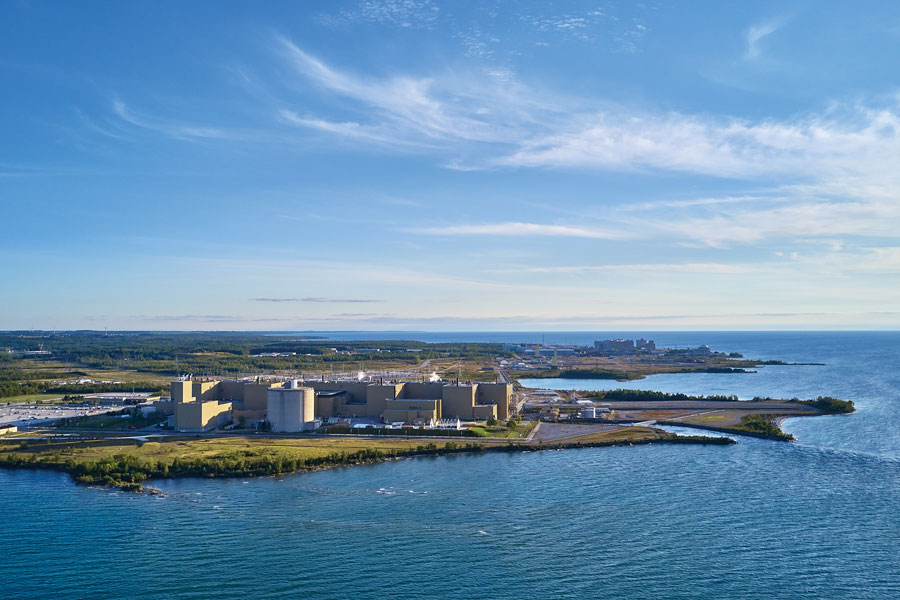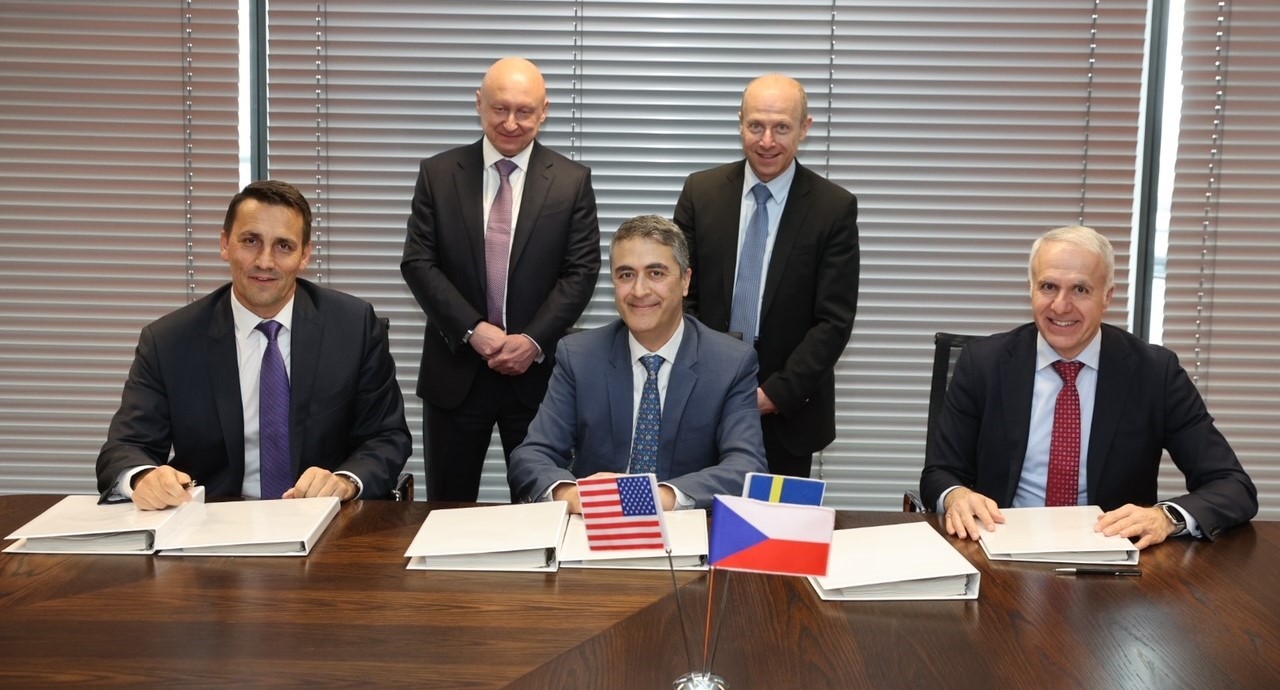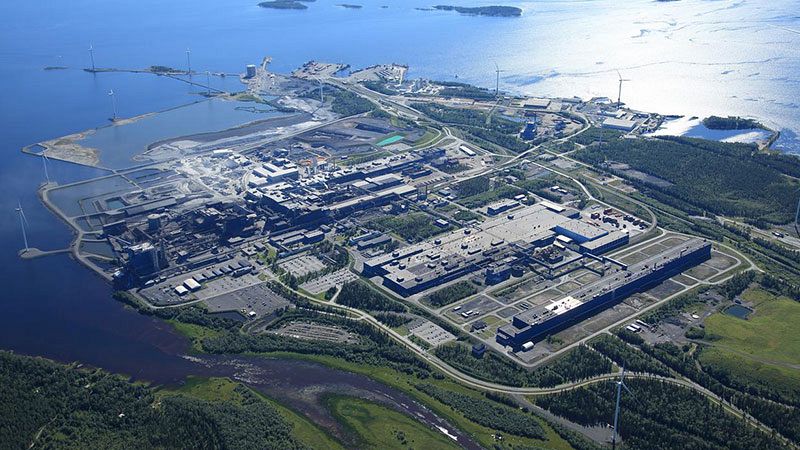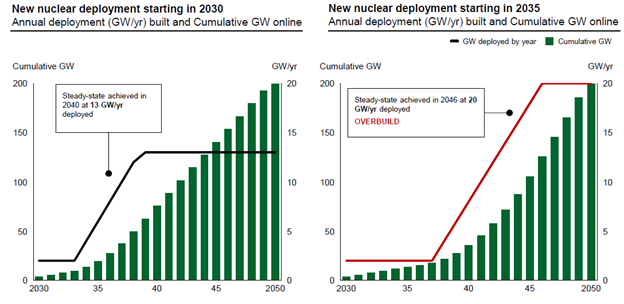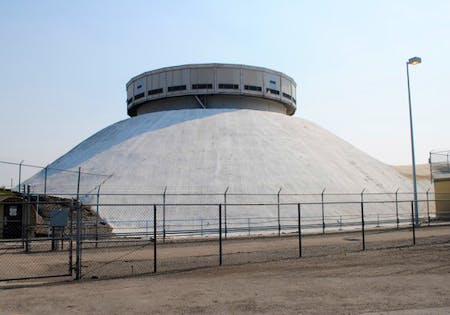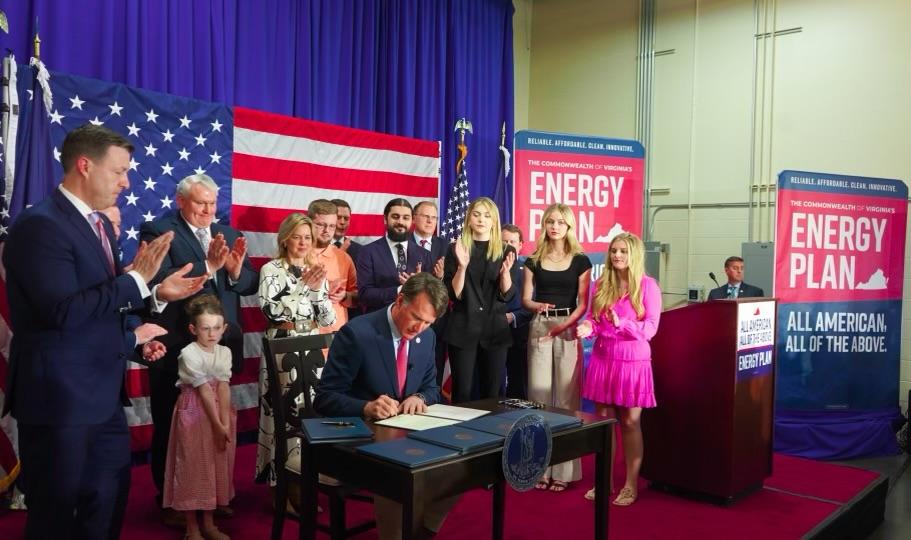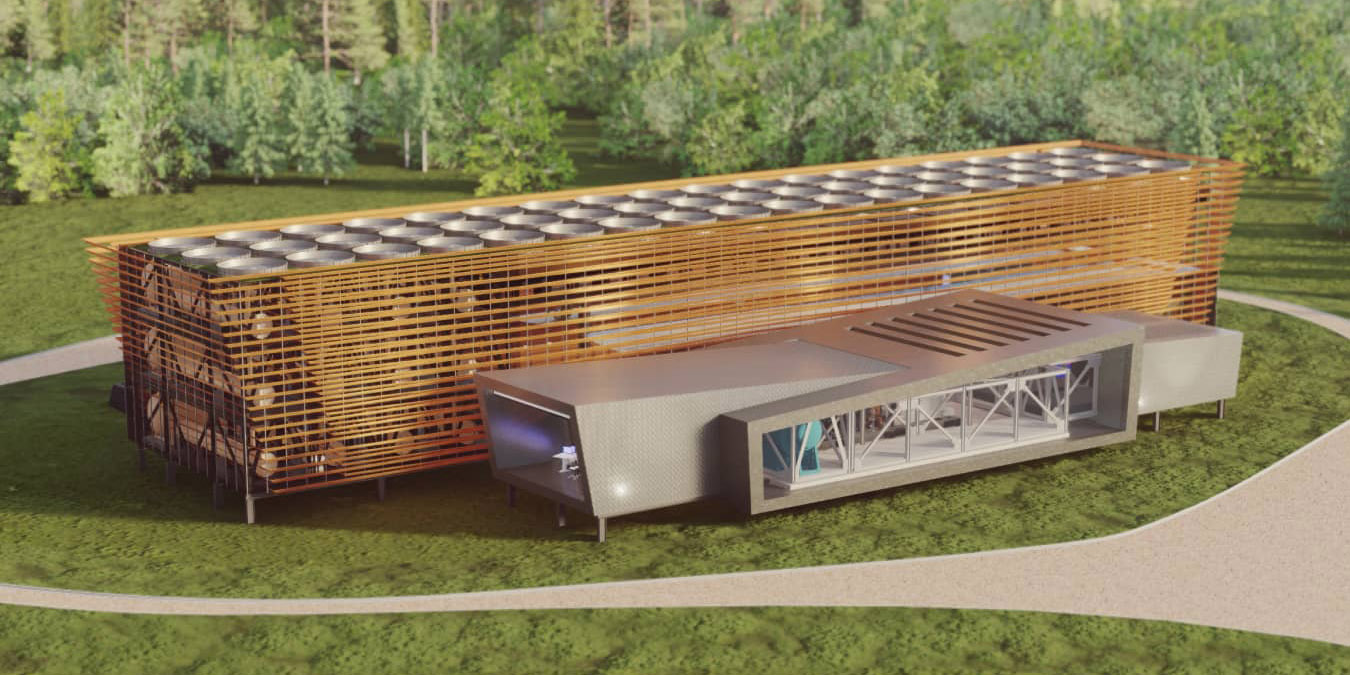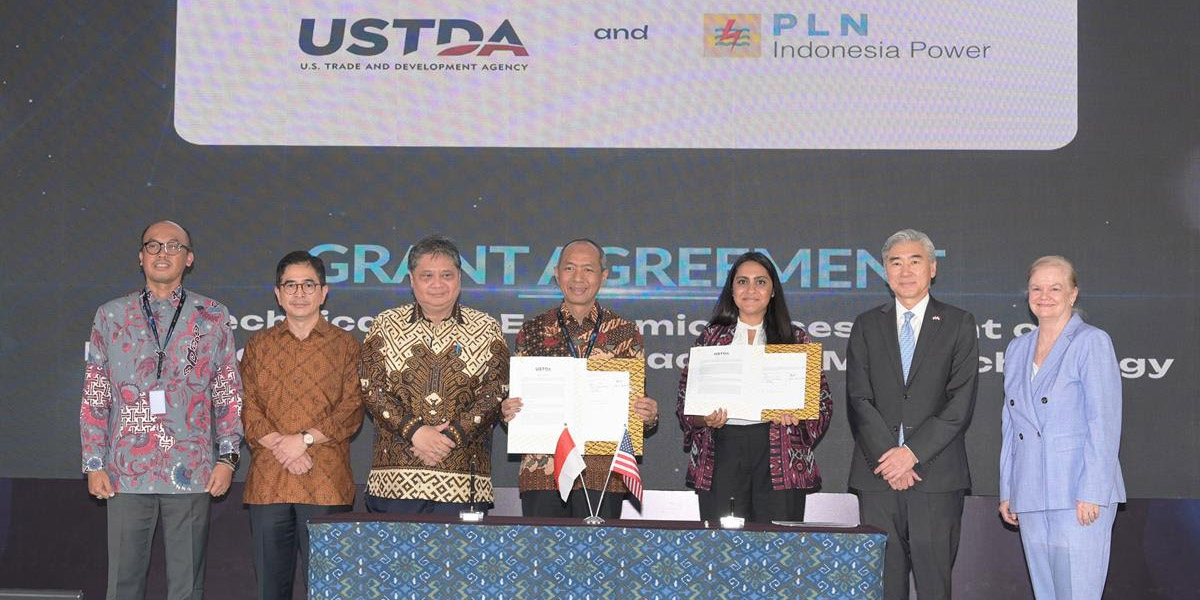Rendering of a Rolls-Royce SMR plant. (Image: Rolls-Royce SMR)
The United Kingdom’s nuclear regulators—the Office for Nuclear Regulation (ONR), the Environment Agency, and Natural Resources Wales (NRW)—have announced the completion of step one of their generic design assessment (GDA) for Rolls-Royce SMR’s 470-MWe small modular reactor design and the start of step two, which is expected to last 16 months.
The Bruce nuclear power plant. (Photo: Bruce Power)
Canada’s Bruce Power, operator of Ontario’s eight-unit Bruce nuclear power plant, has announced the issuance of C$600 million (about $446.3 million) in green bonds in support of the company’s net-zero-by-2027 goal. (Investopedia defines green bonds as fixed-income instruments specifically earmarked to raise money for environmentally friendly projects.)
Vogtle Units 3 and 4 in February. (Photo: Georgia Power)
Unit 3 at the Vogtle nuclear power plant has been successfully synchronized and connected to the electric grid, Georgia Power announced on April 1. The unit—one of two Westinghouse-supplied AP1000s at the Waynesboro, Ga., plant’s nuclear expansion site—becomes the first new U.S. power reactor to start up in seven years.
Bohdan Zronek, ČEZ board member and director of the firm’s nuclear energy division; Tarik Choho, president of Westinghouse’s nuclear fuel division; and Aziz Dag, senior vice president of BWR and VVER fuel for Westinghouse (seated, left to right) signed the agreement. Also present were David Benes, ČEZ Group CEO, and Patrick Fragman, Westinghouse CEO. (Photo: Westinghouse)
Westinghouse has signed an agreement with ČEZ, owner and operator of the Czech Republic’s nuclear power plants, to supply VVER-440 fuel assemblies to the Dukovany facility, the American firm announced March 29. Fuel deliveries will commence in 2024, replacing Russia’s TVEL fuel, with an anticipated term of seven years. One of the Czech Republic’s two nuclear power plants, Dukovany houses four Russian-supplied VVER-440/V213 reactors.
Outokumpu’s steel mill in Tornio, Finland. (Photo: Outokumpu)
Fortum—operator of Finland’s two-unit Loviisa nuclear power plant—has signed a memorandum of understanding with Finnish stainless steel producer Outokumpu to explore decarbonizing the latter’s manufacturing operations with the help of emerging nuclear technologies, the companies announced on March 23.
These graphs illustrate how rapidly scaling the nuclear industrial base would enable nearer-term decarbonization and increase capital efficiency, versus a five-year delay to reach the same 200 GW deployment by 2050. (Source: DOE, Pathways to Commercial Liftoff: Advanced Nuclear, Fig. 1)
The Department of Energy released Pathways to Commercial Liftoff: Advanced Nuclear earlier this month. It is one of the first in a series of reports on clean energy technologies and the private and public investments needed to overcome hurdles to full-scale deployment. The report makes a clear case for investment in nuclear power and challenges potential investors and operators to move beyond the current “wait and see” stalemate and generate “a committed orderbook . . . for 5–10 deployments of at least one reactor design by 2025.”
Romanian president Klaus Iohannis (center left) met with UAE president Sheikh Mohamed bin Zayed Al Nahyan (center right) on March 21. The MOU between Nuclearelectrica and ENEC was announced during the meeting. (Photo: Ligia Deca)
Nuclearelectrica has signed a memorandum of understanding with Emirates Nuclear Energy Corporation (ENEC) to provide both parties with an enabling framework for potential collaboration on the development and expansion of nuclear energy programs in Romania and the United Arab Emirates, as well as in Central and Eastern Europe.
Present at the MOU signing ceremony were, from left, Joost van den Broek and Bertholt Leeftink of NRG Pallas, Belgian ambassador Anick van Calste, and Philippe Van Troeye and Denis Dumont of Tractebel. (Photo: Tractebel)
Belgium-based engineering firm Tractebel and the Netherlands’ NRG Pallas have signed a memorandum of understanding to provide engineering services in support of new reactor construction at the Borssele nuclear power plant, located near the village of Borssele in the Dutch province of Zeeland.
MCRE could be built inside the ZPPR cell (shown here) at INL’s Materials and Fuels Complex. (Photo: INL)
A tiny 200-kWt reactor the Department of Energy says would be the first critical fast-spectrum circulating fuel reactor and the first fast-spectrum molten salt reactor (MSR) could be built and operated inside the Zero Power Physics Reactor (ZPPR) cell at Idaho National Laboratory’s Materials and Fuels Center (MFC). Details included in the Molten Chloride Reactor Experiment (MCRE) draft environmental assessment (EA)—released on March 16 for two weeks of public comment (later extended to four weeks, through April 14)—covered the potential environmental impacts associated with the development, construction, operation, and decommissioning of MCRE at INL, facilitated by the National Reactor Innovation Center (NRIC).
Virginia Gov. Glenn Youngkin participates in a bill-signing ceremony at Energy DELTA Lab in southwest Virginia. (Photo: Christian Martinez/Office of Gov. Glenn Youngkin)
Declaring it a “great day for Virginia energy and American energy,” Gov. Glenn Youngkin on March 23 signed a number of bills to further his state’s all-of-the-above energy plan, including some measures sure to please nuclear energy advocates. Launched in October of last year, the Virginia plan touts nuclear among other energy sources and calls for deploying a commercial small modular reactor in southwest Virginia within the next 10 years.
In a global market with different national regulations, on-site testing of power plant components can be complex. Thanks to smart glasses, remote testing should become easier.
March 29, 2023, 9:30AMNuclear NewsChristoph Gatzen and Simon Lemin VR glasses from manufacturer RealWear.
The challenges of climate change are bringing nuclear energy back into focus. Even in Germany, which decided on a general nuclear phaseout in 2011 as a response to the Fukushima disaster that year, nuclear energy is again being discussed as a bridging technology. Compared with fossil fuels, nuclear saves considerable greenhouse gases. However, for a holistic view of CO2 emissions from power plants, the procurement, maintenance, and repair of plant components must also be considered. At the very least, the CO2 emissions caused by the high costs of testing and maintaining a nuclear power plant can be reduced.
A rendering of Last Energy's nuclear power plant. (Image: Last Energy)
Startup company Last Energy has announced power purchase agreements for 34 units of its 20-MWe nuclear power plants with four industrial partners in Poland and the United Kingdom. In total, according to the company, the deals represent more than $18.9 billion in electricity sales.
Dignitaries assemble after the signing of a memorandum of agreement to help Indonesia develop a nuclear energy program. Among those at the signing were Indonesia's minister for economic affairs Airlangga Hartarto, U.S. ambassador to Indonesia Sung Y. Kim, and U.S. Department of State principal deputy assistant secretary Ann Ganzer. (Photo: State Dept./Erik A. Kurniawan)
The United States and Indonesia have announced a strategic partnership to help the latter nation develop its nuclear energy program, supporting its interest in deploying small modular reactors to meet energy security and climate goals.



